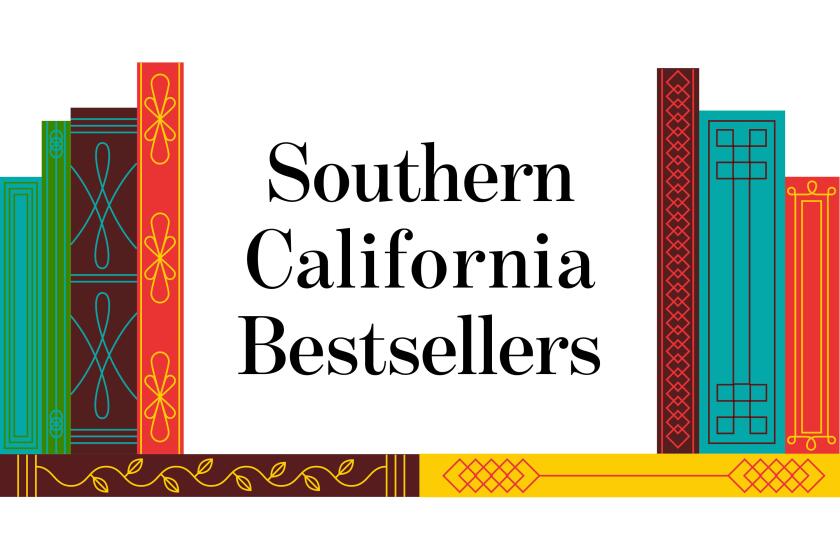Rights and Responsibilities of Citizens of...
- Share via
Thomas Jefferson and James Madison met in October, 1776, in Williamsburg, Va. Thirty-three-year-old Jefferson was already an acknowledged American phenomenon, author of the Declaration of Independence; in Madison’s words, “a walking library” and a man with whom “the Genius of Philosophy ever walked hand in hand.” Madison, eight years younger, was an equal if lower-key prodigy. His principal accomplishment to date had been the shaping of the guarantee of religious liberty in the Virginia Declaration of Rights, and he would be a principal architect of the Constitution and especially the Bill of Rights. It took a while for the modest Madison to captivate Jefferson, but by 1779 their friendship was established, and Jefferson reflected in 1812 that “I can say conscientiously that I do not know in the world a man of purer integrity, more dispassionate, disinterested and devoted to Republicanism: nor could I, in the whole scope of America and Europe, point out an abler head.”
It is difficult to name two figures whose alliance was more central to the establishment of our nation. In the course of their friendship, Madison joined with Jefferson in developing the party system that still structures our political lives. Each served as secretary of state and President; together, they engineered the first transfer of power from one party to another, thus making the democratic republic a reality.
“The Republic of Letters” collects 50 years of letters between these two extraordinary figures. Ranging from the most technical discussions of international finance and natural phenomena to commissions for book buying and architectural plans, these letters record a friendship and a partnership of amazing range and interest.
This admirable edition appears at a time when the historical exchanges between Jefferson and Madison read like current events. Their correspondence contains almost every kind of discussion of our public life today, from the role of the Bill of Rights in our Constitution to the origins of legitimate political opposition. (The very circumstances of the edition’s publication, supported in part by the National Endowment for the Humanities, raises live contemporary issues.) The intentions of the men who founded the United States have become a judicial and political football--and here we can read about them firsthand. So the correspondence collected in these three big volumes has more than antiquarian or historical interest: This is a citizen’s read as well as an expert’s delight.
Editor James Morton Smith has provided a meticulously scholarly edition of the correspondence. Benefiting from the work of two generations of scholars (again, with much support from the NEH) as well as from his own efforts over many years, he has created a historical text. More important to the general reader, Smith has written a helpful and interesting general introduction and divided the chronologically ordered letters into sections, each introduced with an informative, clearly written short history of the biographical and historical circumstances of the letters and a recapitulation of their themes and subjects. The result is an edition that, besides making the letters accessible, offers an excellent short course in the history of the United States from 1776 to 1826.
Jefferson and Madison shared a background and a milieu. Virginia planters, they were shaped by the American Revolution and its constitutional aftermath. They experienced the worth of the American federal union as something observed in the making, not inherited as a given. Intellectually they were suited. Each had a passion for the universe of learning and observation that the Enlightenment had opened up to the 18th Century. It is easy for us to forget how the Baconian injunction, “Knowledge Is Power,” rang practically true for these men. Observation of the weather, natural life and cultivation, of politics and people formed the moment to moment devotions of a life guided by Reason. Science was not arcane but the province of every educated person. Life was mysterious only to those who would not think their way through it. They also shared many of the assumptions that undergirded the Enlightenment’s vision: a skepticism toward authoritarian and orthodox institutions, especially political and religious ones, that restricted human freedom. Ignorance was humanity’s worst enemy and education in the use of Reason its most likely ally.
They were also, however, morally conventional men. Inevitably, reading their correspondence, one begins to see how even the most extraordinary life is constructed from and circumscribed by the historical limits in which it is lived. Jefferson and Madison surmounted these limits more than most, but only sometimes. Although they could each see the essential injustice of slavery, they were capable of day-to-day accommodation with it. They were powerful but not universal reformers, alive to the political rights of the individual as they chose to define him.
Some historical correspondences can be read as epistolary narratives with the rich rewards of personal exchange--Jefferson’s correspondence with John Adams, for example, or Oliver Wendell Holmes Jr.’s with Harold Laski. Jefferson and Madison were not primarily correspondents, however, but rather friends and partners in the enterprise of nation building. For many years, they worked together on a regular basis and so had no need of letters. The most interesting letters came, of course, when they couldn’t talk things over with one another; a reader senses that in person these two men shared a vivacity that is lacking on the page. Perhaps too, they understood one another so well that their correspondence lacks that element of mutual introduction and declaration and explanation that makes the epistolary such a dramatic form of reading. Neither was temperamentally inclined to be confessional. Besides, they knew one another’s feelings, shared the essential codes of living; it was ideas, politics, architecture, natural science, contemporaries, events that they needed to write about.
Madison and Jefferson had also to watch what they wrote. The privacy of their letters was not protected. They were entrusted to an embryonic post or to friends or couriers. At several points, for instance, when he was vice president under John Adams and the figurehead of the Republican opposition to the Federalists, Jefferson was certain that he was the object of conspiracy and insisted on codes and indirection in their letters.
The most important exchanges of letters between Jefferson and Madison were probably those of the mid-to late-1780s. The fledgling American Confederation had won independence from England but had not really established its own political and commercial independence. The national life was a riot of exuberant and dangerous response to independence and a simultaneous apprehension that something more than the confederation of the former colonies would be required for the survival and prosperity, let alone greatness, of this continental republic. Jefferson was in France as the American minister; Madison was a Virginia legislator and an active participant in the movement to call a constitutional convention and to write and ratify a Constitution.
Jefferson’s response to the federal Constitution--and especially in the exchanges about a bill of rights--make indispensable reading for American citizens. For example: “The inconveniences of the Declaration [of Rights] are that it may cramp government in its useful exertions. Bu the evil of this is short-lived, moderate and reparable. The inconveniences of the want of a Declaration are permanent, afflicting and irreparable: They are in constant progression from bad to worse.”
The level of their discourse, the elevation of their concerns and the substance of their views are a reproach to the degraded public discourse of our own day. They were using the best and most advanced knowledge available to them to think through the public business. Writing as one cultural elitist to another, Jefferson expressed a shared conviction that the Virginia capitol should be built from the finest ancient models with the best modern materials and expertise: “You see I am an enthusiast on the subject of the arts. But it is an enthusiasm of which I am not ashamed, as its object is to improve the taste of my countrymen, to increase their reputation, to reconcile to them the respect of the world and procure them its praise.”
Their exchanges about the role of individual liberty in free government also remain riveting and challenging. Jefferson’s critique of the Constitution and Madison’s response during the Constitution-making period are nothing short of thrilling to read now, when our own discussions surrounding the fundamental issues of our federal, Democratic and free system are as stale and rhetorical as the issues are present and pressing. These letters simply make more sense than most of what we read from politicians and pundits today. When, for example, Jefferson wrote Madison his famous maxim that “the earth belongs to the living,” the letter and its context make it clear that Jefferson was thinking about ways to keep the Constitution alive and its guarantees firm. And Madison’s strictures on religion and its public role are a bracing challenge to contemporary pieties: “Whilst we assert for ourselves a freedom to embrace, to profess and to observe the Religion which we believe to be of divine origin, we cannot deny an equal freedom to those whose minds have not yielded to the evidence which has convinced us. If this freedom be abused, it is an offense against God, not against Man. To God, therefore, not to Man, must an account of it be rendered.”
It may surprise readers how far-sighted these thinkers were, or conversely, how few questions we have solved in 200 years. Madison’s incisive understanding of the effect of large population is the corollary of his imaginative understanding that American liberty might thrive in an extended republic. “A certain degree of misery seems inseparable from a high degree of populousness,” he wrote. “No problem in political economy has appeared more puzzling than that which relates to the proper distribution of the inhabitants of a country fully peopled. Let the lands be shared among them ever so wisely, and let them be supplied with laborers ever so plentifully; as there must be a great surplus of subsistence, there will also remain a great surplus of inhabitants, a greater by far than will be employed in clothing themselves and those who feed them, and in administering to both every other necessary and even comfort of life. What is to be done with this surplus?” Madison emerges from these letters as the extraordinary head Jefferson thought him.
The history of American political life in the first 50 years of independence is thoroughly worth reading. The Madison-Jefferson letters may not be conventional summer reading--but should be. Jefferson and Madison contended with the very issues that drive public life today. The Whiskey Rebellion and Shays Rebellion raised questions that parallel those raised now by militias. The abuses of our political campaigns are no patch on those of the election of 1800. Like all good history, these letters upset rather than confirm any ideas we bring to them. We are fortunate to have the inconvenient, unsettling and extraordinary letters of Jefferson and Madison to read. We need their example and advice.
More to Read
Sign up for our Book Club newsletter
Get the latest news, events and more from the Los Angeles Times Book Club, and help us get L.A. reading and talking.
You may occasionally receive promotional content from the Los Angeles Times.










